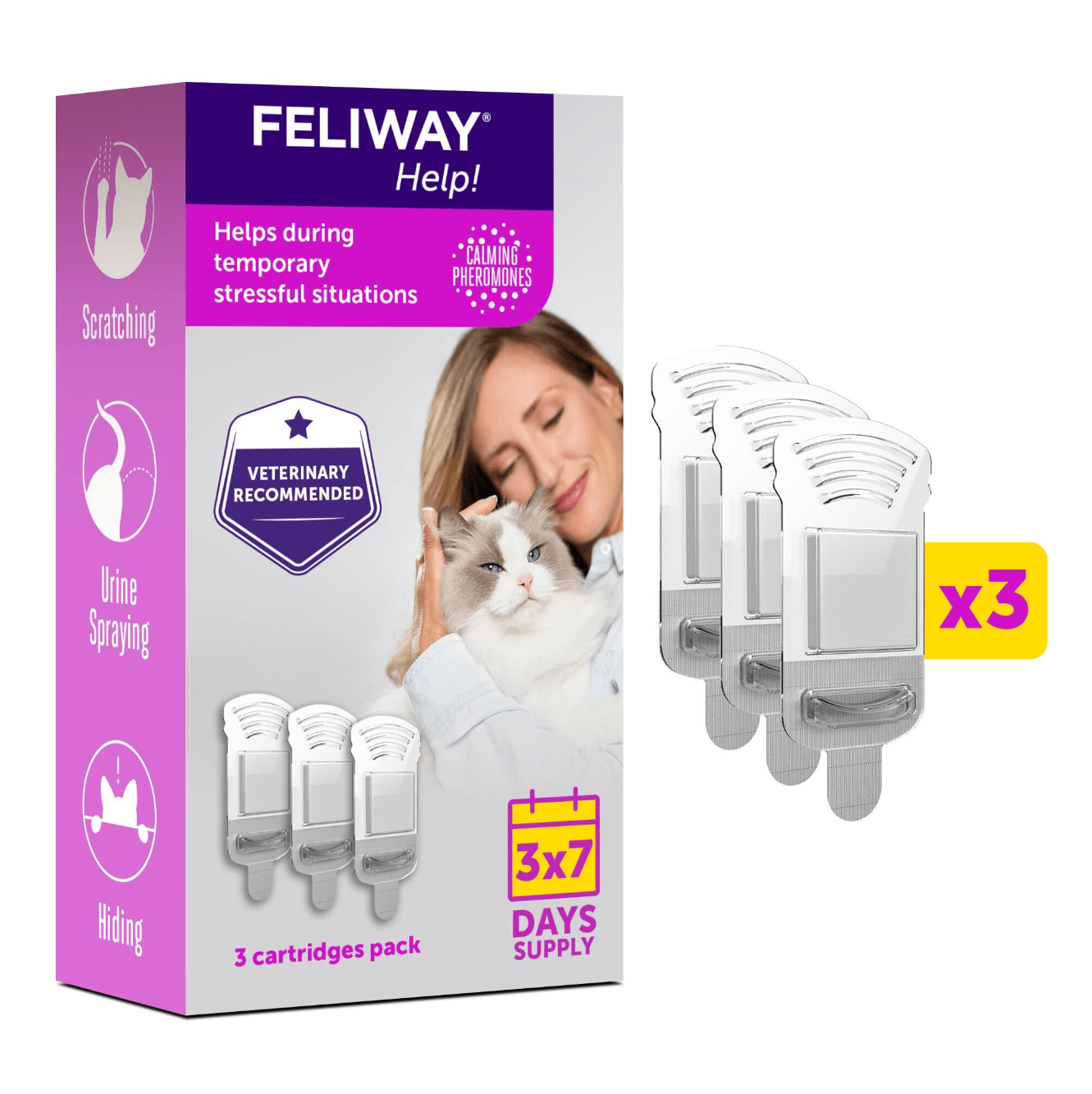
How Can I Help My New Kitten Adjust? 27 Tips And Training Points To Know!
Adjusting to a new home can be a challenging time for a kitten who has left all they know behind! Until they are around 8 weeks old, a kitten's life has revolved around their mother cat and the litter, your kitty has come to trust that they have quick access to their mother's milk, and will be used to playing with their siblings!
So when they are removed from that familiar situation, it's not surprising that they can become nervous and unsure of their new surroundings.
Patience and understanding is needed as your kitten settles into their new home with you, remember that some kittens will settle in quicker than others!
Before the big arrival
- Prepare an area in a room that your kitten can settle into when they first arrive home. This area should contain all the essentials for a happy cat such as food and water bowls, litter tray, scratching post, bed and toys. However, remember to keep food bowls and toilet facilities apart, cats are very fastidious and don't like to have their food close to their toilet!

- A few days before your kitten arrives, plug FELIWAY Help Diffuser into the room where they will be spending their first days so your kitty will receive happy and welcoming pheromone messages when they arrive in their new environment, to help them relax.
- Get a supply of the same food and litter tray substrate your kitten has been used to. Do not try to make any changes to these until they have settled into their new home (this could take a couple of weeks).
- Keep all windows and doors securely closed so they cannot accidentally escape. If the weather is warm, and you need to provide a flow of air through the room, place a secure grid/mesh over the window when open.
- Don't forget to provide hiding places; kittens love to hide, and will love exploring a cardboard box or a cosy corner where they feel safe. You may find that when they first arrive, they will disappear into a hiding place and not reappear for hours until they feel brave and inquisitive enough to, and they will probably be hungry too!
- Arrange access to an elevated spot (like a cat tower, shelf, or the top of a cupboard) with routes so that they can climb to that area, such as a chair to a windowsill. Cats feel safe perusing their surroundings from up high!
- Providing a scratching post should get their interest when they feel like exercising their claws, and it will also protect your furniture.
- Source a suitable carrier for your cat. Think about what size your cat is likely to be fully grown and purchase one appropriate for now and in the future. Plastic carriers with a door at the front and on the top are useful as they are sturdy, and give options for your cat to get in and out of the carrier. They are also easy to clean.
-
Make an appointment with the vet to have them checked, and discuss preventative health care and microchipping plans a few days after they come home.

The journey home -
Depending on your kitten's age, and vaccination schedule, their journey to their new home may be one of their first experiences on their own, so you need to make this travel experience as calm and comfortable as possible. Put something familiar into the carrier, perhaps an old T-shirt that has been with them, their siblings and their mother, this will hold familiar scents and you can also spray the carrier with FELIWAY Classic 15 minutes before your kitten is due to travel. FELIWAY Classic Spray helps calm and reduce stress on-the-go.
- Never be tempted to transport your kitten home on your lap. They are extremely agile and can easily escape, which can, potentially, be dangerous for both the cat and the driver. When you stop the car to get out, they could easily escape through the open door.
- Secure the carrier with the seatbelt in case you have to stop in an emergency, or place the carrier in a footwell behind a front seat.
- Keep the car well ventilated in the summer and provide bedding if it's cold.Covering the carrier with a blanket may also help your kitten feel more secure.
-
If your journey home is long, take regular breaks and make sure your kitten stays hydrated with water and they have the opportunity to use a portable litter tray, without opening car doors!

Welcome home! - When you arrive home, take your cat straight into their safe room which you have already prepared for them. Open the carrier door and allow them to come out in their own time.
- Let them investigate their new safe space slowly and find their food, water and litter tray as they explore. Don't worry if they don't eat immediately, but to ensure they drink, consider having a water fountain close by, cats like to drink from running water.
-
Manage your (and your family's) expectations. It may take a few days for your cat to settle and want to interact with you. Kittens are playful, so have some enticing toys around to try and encourage them to play with you, like a piece of string with a fluffy 'mouse' or a ping-pong ball they can chase. Remember, however, they are still kittens and need a lot of catnaps to restore their energy.
Your life together
- Once your kitten seems comfortable with their new surroundings, you can gradually extend their access to the rest of your home, but always consider potential hazards they may encounter and make your home as kitten-proof as possible, like removing loose wires, considering any spaces your kitten could climb into, closing doors or blocking off no-go areas or introducing them to a baby in the home.
- If your cat is going to have access to the outside:
- Get them microchipped
- Ensure your cat is fully vaccinated (typically these start around 8-9 weeks, with a second vaccination at 12 weeks). They will then need annual boosters thereafter.
- Arrange for them to be neutered, cats can reach sexual maturity at just 4 months. - Try taking them outside on a leash for the first few times, so that they can get used to the outside world under supervision. Allowing them outside before a meal will encourage them to come back in if they know there's food waiting.
- Consider installing a cat flap if your kitten is going to spend a lot of time outside, but you will need to train them to use it. Plenty of treats normally does the trick!
- Reward your kitten as they learn, keep treats nearby.
- Start with the flap open and use a treat to lure your kitten to the flap and then through the flap. Each time they come to the flap and then through it, give them a reward.
- Repeat until your kitten will happily go through the flap.
- Once they are comfortable going through the space, close the flap and encourage them to push the flap open and go through.
- Keep encouraging them and they'll soon learn how to master getting in and out on their own.
- Using a microchip cat flap can also help you be certain that it is your cat, and your cat only who can use the flap!
- Spend regular time together, cats are at their most active early in the morning or in the evening, so this is a great time to schedule in playtime and training to develop your bond together.
- When they are still young, handle them gently for short periods of time (rather than one long period). This goes for young children too, but always supervise this interaction; remember kittens have sharp claws and children can have a strong grip which may frighten your kitten, a potentially dangerous combination!
- Try not to overwhelm your kitten with too many introductions at the beginning. Keep new visitors to a minimum and encourage them to follow your kitten handling rules. Gentle handling by different people is helpful for your cat's socialisation, just remember to let them come to you in their own time!
- Similarly, introductions to other house pets should be supervised carefully, they could become real friends before too long!
- Contrary to popular belief, cats can be trained! Teaching them to respond to their name, use their litter tray, enjoy grooming sessions and play games are all beneficial to ensure a happy life and a close relationship.
Once your new kitten has adjusted, you can look forward to a long and fulfilling life together!





































